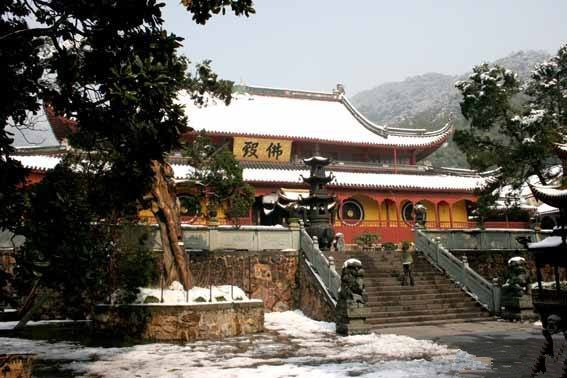Yongguo Temple in Yongping County, Dali
Location
Yongguo Temple (Yǒngguó Sì, 永国寺) is situated in the scenic area of Shanyang Town, Yongping County, Dali (大理), Yunnan Province (云南省), China. It lies on the hillside of Bonan Mountain (博南山), approximately 30 kilometers southwest of Yongping City (永平县).
Historical Background
Originally named Ningxi Zen Temple (宁西禅寺), Yongguo Temple was established in the early Ming Dynasty (明朝). It served as a prominent religious site along the ancient Bonan Road (博南古道), which was a crucial route during its peak.
Overview
Brief Introduction
Yongguo Temple has a rich history that flourished during the Ming and Qing Dynasties (明清), becoming a major site for Buddhist worship. The renowned scholar Yang Sheng’an (杨升庵) frequented the temple during his exile and composed poetry there, contributing to its cultural significance. In honor of Yang, a memorial hall was built on Bonan Mountain.
Notable Quotations
A couplet written by Zhao Fan (赵藩) commemorates Yang Sheng’an: “自号博南山人,唱酬遥寄张公子;
地近宁西禅寺,英魂常依李晋王。”
(“Self-named as a man of Bonan Mountain, sending poetic responses to Young Master Zhang;
Close to Ningxi Zen Temple, the heroic soul often lingers by Li Jingwang.”)
Significance of Li Jingwang
Li Jingwang (李定国), a famous general known for resisting the Qing Dynasty, once took refuge at Yongguo Temple during the late Ming period. He fought battles in the vicinity as he fled westward with the Yongli Emperor (永历皇帝). A memorial tablet within the temple records his presence.
Architectural Features
Yongguo Temple originally featured five courtyards, with grand architecture and exquisite details. The temple housed a significant bronze statue of Buddha, approximately two zhang tall (over 6 meters), symbolizing the temple’s grandeur.
The Legendary Ancient Camellias
Within the temple grounds are two ancient “Dali Tea” (大理茶) camellia trees, believed to be planted by the Yongli Emperor (永历帝). These trees are of historical significance as they are considered the mother trees of the Dali tea flower variety. The right camellia tree uniquely produces “tree milk,” a rare phenomenon.
Characteristics of the Camellias
The camellias bloom profusely, showcasing large, vibrant red flowers that can reach up to 22 centimeters in diameter, making them one of the most precious varieties in Yunnan.
Travel Information
How to Get There
Yongguo Temple is accessible via rough terrain, requiring a four-wheel-drive vehicle due to its steep and bumpy paths. The temple is located near Shanyang Town, and visitors may need to navigate through rural roads from Yongping City.
Travel Tips
- Best Time to Visit: Spring, when the camellias bloom, is the ideal season to experience the temple’s beauty.
- Preparation: Given the temple’s remote location, ensure your vehicle is in good condition and consider traveling with a local guide familiar with the area.
- Cultural Respect: As a place of worship, visitors should dress modestly and respect the local customs.
- Photography: Capture the stunning landscape and ancient camellias but be mindful of other visitors and worshippers.
Yongguo Temple not only offers spiritual enrichment but also a glimpse into the historical and cultural tapestry of Yunnan Province. Its unique flora and rich heritage make it a worthwhile destination for travelers seeking both tranquility and adventure.
















